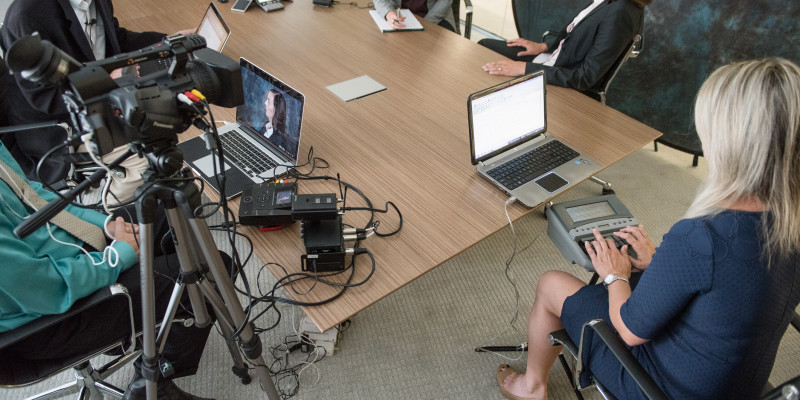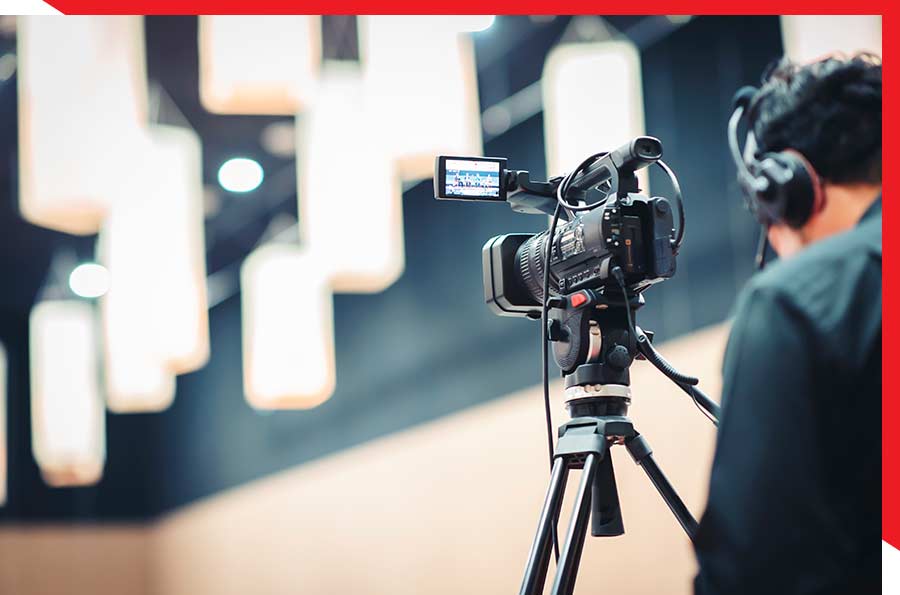Legal Videography: Changing the Way Evidence is Caught and Presented
Legal Videography: Changing the Way Evidence is Caught and Presented
Blog Article
Digging Into the Systems of Lawful Videography: Unveiling Its Procedure in Safeguarding Authentic Aesthetic Statement for Judicial Process
In the world of judicial procedures, the role of legal videography stands as a cornerstone in preserving and offering aesthetic proof. As modern technology continues to breakthrough, the systems behind legal videography have ended up being significantly detailed, supplying a crucial layer of credibility to statements caught on video.
Historic Development of Legal Videography
Taking a look at the historic progression of legal videography reveals a substantial makeover in the capturing and discussion of visual proof within the legal landscape. In the past, legal process heavily depended on written transcripts and pictures to record events and provide proof. With the introduction of video clip technology, the lawful sector witnessed a standard change in how aesthetic statement was recorded and presented.
The advancement of lawful videography can be traced back to the late 20th century when advancements in video recording devices made it much more easily accessible for use in courts. This technological development not only improved the precision and dependability of aesthetic evidence however likewise reinvented the method instances were presented to juries and courts (Legal Videography). Lawyers started to identify the influential power of video clip recordings in conveying feelings, nuances, and non-verbal signs that created photographs or records alone could not record successfully

Modern Technology Developments in Video Paperwork
What key technical innovations have changed video paperwork in the lawful area? The legal field has seen substantial advancements in video paperwork innovation that have actually enhanced the credibility and integrity of aesthetic proof in judicial proceedings. Among the key developments is high-def (HD) video recording capabilities, which supply crystal-clear images and sharp information that are essential for precisely catching statements, face expressions, and various other aesthetic hints. Additionally, the assimilation of timestamping and metadata attributes in video documents devices has actually allowed specific paperwork of when and where the video clip was videotaped, guaranteeing the stability of the evidence offered in court.
Furthermore, advancements in video clip security and watermarking modern technologies have bolstered the protection and tamper-proof nature of video clip proof, guarding it versus unauthorized modifications or meddling. The arrival of cloud storage options and remote gain access to capacities has structured the storage, retrieval, and sharing of video evidence, assisting in smooth partnership among legal professionals and making sure efficient accessibility to essential aesthetic testimonies when required. These technical advancements in video clip paperwork have actually certainly changed the lawful area, improving the accuracy, credibility, and admissibility of aesthetic proof in judicial proceedings.
Function of Lawful Videographers in Courtroom Settings
The advancement of video documents innovation in the legal field has actually required an essential function for legal videographers in courtroom setups, guaranteeing the integrity and integrity of visual testimonies offered during judicial procedures. Lawful videographers play a basic role in capturing and preserving accurate aesthetic evidence that can be pivotal in lawsuit. Their duty reaches establishing equipment, tape-recording process, and creating high-grade videos that properly show see this here the occasions in the court room.
In court room settings, lawful videographers need to abide by stringent standards and standards to maintain the credibility of the visual document. They have to possess an eager eye for detail and a thorough understanding of lawful treatments to make sure that the video they capture is a real representation of the events that transpired. In addition, lawful videographers typically work carefully with lawful groups to make certain that the video clip evidence lines up with the instance's demands and can be effectively provided in court to sustain the legal disagreements being made. In general, the function of legal videographers in court room settings is important in promoting the concepts of justice and making certain the openness of lawful process.

Ensuring Admissibility and Stability of Video Proof
To keep the credibility of aesthetic evidence presented in legal proceedings, ensuring the admissibility and integrity of video clip proof is an important obligation for legal videographers. Admissibility describes the approval of proof by the court, and for video clip evidence to be permissible, it should satisfy specific requirements. Legal videographers play a critical role in ensuring that the videos they capture abide by the policies of proof, such as significance, credibility, and reliability.
Honesty of video proof involves maintaining the creativity and accuracy of the video footage from the moment it is tape-recorded till it is provided in court. This includes firmly saving the video files, documenting the chain of guardianship, and stopping any meddling or alterations. Lawful videographers click site need to adhere to stringent protocols to ensure the honesty of the video clip proof and protect against any kind of challenges to its credibility.
Future Trends in Legal Videography
Offered the raising reliance on technology in lawful process, lawful videographers are positioned to welcome ingenious innovations forming the future of visual statement capture and presentation. Among the popular fads on the horizon is the combination of virtual reality (VR) and augmented reality (AR) modern technologies into lawful videography. These innovations have the prospective to revolutionize just how aesthetic evidence is presented in courts, enabling courts and judges to submerse themselves in the scene of the criminal offense or occurrence.
Additionally, using expert system (AI) formulas for video evaluation is anticipated to simplify the process of assessing and evaluating big amounts of video clip footage. AI can aid in recognizing vital minutes, anomalies, and patterns within video clips, boosting the performance of legal examinations.

Verdict
Finally, legal videography has actually played a crucial role in offering genuine visual evidence for judicial process. Via technological innovations and the know-how of legal videographers, the honesty and admissibility of video clip evidence are guaranteed in court settings. As legal videography remains to evolve, it will be vital to support requirements that preserve the precision and dependability of aesthetic statement for the future of lawful process.
Checking out the historic progression of lawful videography exposes a considerable transformation in the catching and discussion of aesthetic evidence within the legal landscape.The advancement of video clip paperwork modern technology in the lawful field has actually required an essential role for lawful videographers in court setups, making sure the stability and dependability of aesthetic statements provided throughout judicial procedures. Furthermore, legal videographers often function closely with legal teams to ensure that the video evidence aligns with the instance's needs and can be more information effectively presented in court to sustain the lawful disagreements being made.To maintain the reliability of visual evidence offered in legal proceedings, making certain the admissibility and integrity of video evidence is an essential obligation for legal videographers. As legal videography proceeds to progress, it will be essential to promote criteria that maintain the accuracy and reliability of aesthetic testament for the future of lawful proceedings.
Report this page